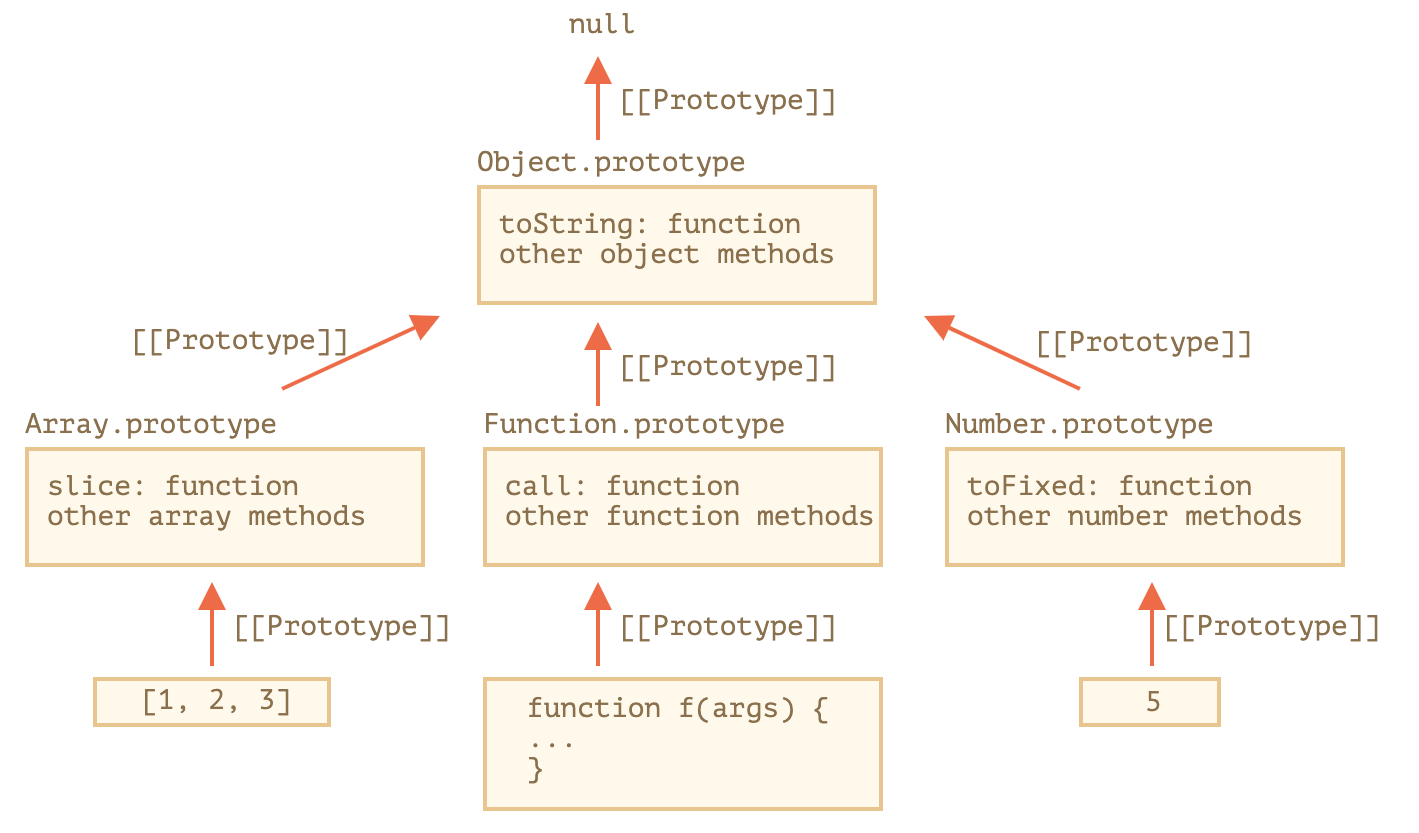您好,登錄后才能下訂單哦!
您好,登錄后才能下訂單哦!
本篇內容主要講解“如何掌握前端JavaScript中的class類”,感興趣的朋友不妨來看看。本文介紹的方法操作簡單快捷,實用性強。下面就讓小編來帶大家學習“如何掌握前端JavaScript中的class類”吧!
類是用于創建對象的模板。JavaScript中生成對象實例的方法是通過構造函數,這跟主流面向對象語言(java,C# )寫法上差異較大,如下:
function Point(x, y) {
this.x = x;
this.y = y;
}
Point.prototype.toString = function () {
return '(' + this.x + ', ' + this.y + ')';
};
var p = new Point(1, 1);ES6 提供了更接近Java語言的寫法,引入了 Class(類)這個概念,作為對象的模板。通過class關鍵字,可以定義類。
如下:constructor()是構造方法,而this代表實例對象:
class Point {
constructor(x, y) {
this.x = x;
this.y = y;
}
toString() {
return '(' + this.x + ', ' + this.y + ')';
}
}類的數據類型就是函數,它本身就是指向函數的構造函數:
// ES5 函數聲明
function Point() {
//...
}
// ES6 類聲明
class Point {
//....
constructor() {
}
}
typeof Point // "function"
Point === Point.prototype.constructor // true在類里面定義的方法是掛到Point.prototype,所以類只是提供了語法糖,本質還是原型鏈調用。
class Point {
constructor(x, y) {
this.x = x;
this.y = y;
}
toString() {
return '(' + this.x + ', ' + this.y + ')';
}
}
Point.prototype = {
//....
toString()
}
var p = new Point(1, 1);
p.toString() // (1,1)類的另一種定義方式類表達式
// 未命名/匿名類
let Point = class {
constructor(x, y) {
this.x = x;
this.y = y;
}
};
Point.name // Point函數聲明和類聲明有個重要區別,函數聲明會提升,類聲明不會提升。
> let p = new Point(); // 被提升不會報錯
> function Point() {}
>
> let p = new Point(); // 報錯,ReferenceError
> class Point {}
>constructor()方法是類的默認方法,new生成實例對象時會自動調用該方法。
一個類必須有constructor()方法,如果沒有顯式定義,引擎會默認添加一個空的constructor() 。
constructor()方法默認返回實例對象(即this)。
class Point {
}
// 自動添加
class Point {
constructor() {}
}與 ES5 一樣,在類的內部可以使用get和set關鍵字,對某個屬性設置存值函數和取值函數,攔截該屬性的存取行為。
class User {
constructor(name) {
this.name = name;
}
get name() {
return this.name;
}
set name(value) {
this.name = value;
}
}類的方法內部的this,它默認指向類的實例,在調用存在this的方法時,需要使用 obj.method()方式,否則會報錯。
class User {
constructor(name) {
this.name = name;
}
printName(){
console.log('Name is ' + this.name)
}
}
const user = new User('jack')
user.printName() // Name is jack
const { printName } = user;
printName() // 報錯 Cannot read properties of undefined (reading 'name')如果要單獨調用又不報錯,一種方法可以在構造方法里調用bind(this) 。
class User {
constructor(name) {
this.name = name;
this.printName = this.printName.bind(this);
}
printName(){
console.log('Name is ' + this.name)
}
}
const user = new User('jack')
const { printName } = user;
printName() // Name is jackbind(this) 會創建一個新函數,并將傳入的this作為該函數在調用時上下文指向。
另外可以使用箭頭函數,因為箭頭函數內部的this總是指向定義時所在的對象。
class User {
constructor(name) {
this.name = name;
}
printName = () => {
console.log('Name is ' + this.name)
}
}
const user = new User('jack')
const { printName } = user;
printName() // Name is jack靜態屬性指的是類本身的屬性,而不是定義在實例對象this上的屬性。
class User {
}
User.prop = 1;
User.prop // 1可以在類里面定義靜態方法,該方法不會被對象實例繼承,而是直接通過類來調用。
靜態方法里使用this是指向類。
class Utils {
static printInfo() {
this.info();
}
static info() {
console.log('hello');
}
}
Utils.printInfo() // hello關于方法的調用范圍限制,比如:私有公有,ES6暫時沒有提供,一般是通過約定,比如:在方法前面加下劃線_print()表示私有方法。
Java中通過extends實現類的繼承。ES6中類也可以通過extends實現繼承。
繼承時,子類必須在constructor方法中調用super方法,否則新建實例時會報錯。
class Point3D extends Point {
constructor(x, y, z) {
super(x, y); // 調用父類的constructor(x, y)
this.z = z;
}
toString() {
return super.toString() + ' ' + this.z ; // 調用父類的toString()
}
}父類的靜態方法,也會被子類繼承
class Parent {
static info() {
console.log('hello world');
}
}
class Child extends Parent {
}
Child.info() // hello world在子類的構造函數必須執行一次super函數,它代表了父類的構造函數。
class Parent {}
class Child extends Parent {
constructor() {
super();
}
}在子類普通方法中通過super調用父類的方法時,方法內部的this指向當前的子類實例。
class Parent {
constructor() {
this.x = 1;
this.y = 10
}
printParent() {
console.log(this.y);
}
print() {
console.log(this.x);
}
}
class Child extends Parent {
constructor() {
super();
this.x = 2;
}
m() {
super.print();
}
}
let c = new Child();
c.printParent() // 10
c.m() // 2初學JavaScript時, _proto_和prototype 很容易混淆。首先我們知道每個JS對象都會對應一個原型對象,并從原型對象繼承屬性和方法。
prototype 一些內置對象和函數的屬性,它是一個指針,指向一個對象,這個對象的用途就是包含所有實例共享的屬性和方法(我們把這個對象叫做原型對象)。
_proto_ 每個對象都有這個屬性,一般指向對應的構造函數的prototype屬性。
下圖是一些擁有prototype內置對象:

根據上面描述,看下面代碼
var obj = {} // 等同于 var obj = new Object()
// obj.__proto__指向Object構造函數的prototype
obj.__proto__ === Object.prototype // true
// obj.toString 調用方法從Object.prototype繼承
obj.toString === obj.__proto__.toString // true
// 數組
var arr = []
arr.__proto__ === Array.prototype // true對于function對象,聲明的每個function同時擁有prototype和__proto__屬性,創建的對象屬性__proto__指向函數prototype,函數的__proto__又指向內置函數對象(Function)的prototype。
function Foo(){}
var f = new Foo();
f.__proto__ === Foo.prototype // true
Foo.__proto__ === Function.prototype // true類作為構造函數的語法糖,也會同時有prototype屬性和__proto__屬性,因此同時存在兩條繼承鏈。
子類的__proto__屬性,表示構造函數的繼承,總是指向父類。
子類prototype屬性的__proto__屬性,表示方法的繼承,總是指向父類的prototype屬性。
class Parent {
}
class Child extends Parent {
}
Child.__proto__ === Parent // true
Child.prototype.__proto__ === Parent.prototype // true子類實例的__proto__屬性,指向子類構造方法的prototype。
子類實例的__proto__屬性的__proto__屬性,指向父類實例的__proto__屬性。也就是說,子類的原型的原型,是父類的原型。
class Parent {
}
class Child extends Parent {
}
var p = new Parent();
var c = new Child();
c.__proto__ === p.__proto__ // false
c.__proto__ === Child.prototype // true
c.__proto__.__proto__ === p.__proto__ // true到此,相信大家對“如何掌握前端JavaScript中的class類”有了更深的了解,不妨來實際操作一番吧!這里是億速云網站,更多相關內容可以進入相關頻道進行查詢,關注我們,繼續學習!
免責聲明:本站發布的內容(圖片、視頻和文字)以原創、轉載和分享為主,文章觀點不代表本網站立場,如果涉及侵權請聯系站長郵箱:is@yisu.com進行舉報,并提供相關證據,一經查實,將立刻刪除涉嫌侵權內容。